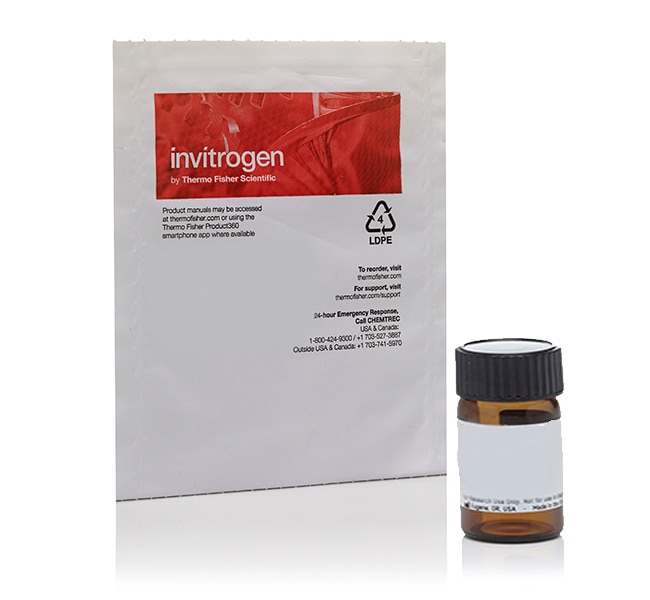Search Thermo Fisher Scientific

Transferrin From Human Serum, Alexa Fluor™ 488 Conjugate
| Catalog Number | Quantity |
|---|---|
| T13342 | 5 mg |
Transferrin is a monomeric serum glycoprotein (∼80,000 daltons) that binds to a specific receptor on the surface of vertebrate cells and delivers up to two Fe3+ atoms via receptor-mediated endocytosis—our labeled LDL complexes are useful tools for studying this phenomenon. Once iron-carrying transferrin proteins are inside endosomes, the acidic environment favors dissociation of iron from the transferrin–receptor complex. Following the release of iron, the apotransferrin is recycled to the plasma membrane, where it is released from its receptor to scavenge more iron. Fluorescent transferrin conjugates can therefore be used with fluorescent LDL to distinguish the lysosomally directed and recycling endosomal pathways.
These experiments are typically performed by adding fluorescently labeled transferrin to cultured cells and analyzing them by microscopy. We offer a biotinylated transferrin conjugate and more than 10 fluorescent versions.
Consult user Manual for solubility instructions.
Transferrin Specifications:
• Label (Ex/Em): Alexa Fluor™ 488 (495/519)
• Amount: 15 mg solid (contains 5 mg of transferrin conjugate)
Key Applications of Labeled Transferrin
Some of the many applications for labeled transferrin include:
• Image transferrin receptor dynamics using FRET
• Observe receptor trafficking in live cells by confocal laser-scanning microscopy
• Investigate events occurring during endosomal acidification
• Measure transferrin receptor binding affinity in mammals and parasites
Figures

